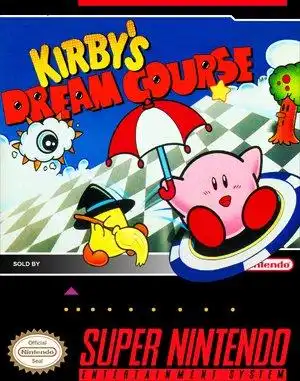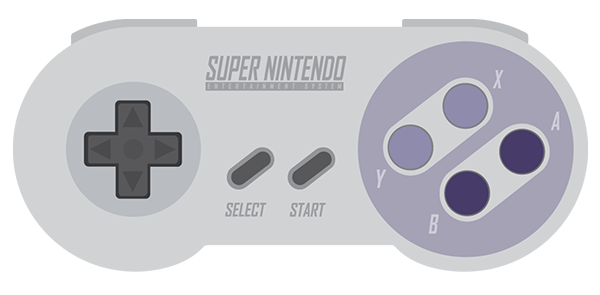Remember that delightful era when game developers weren't afraid to get weird? When beloved platforming heroes could suddenly star in a mini-golf game, and it somehow just worked? Welcome back to the world of Kirby's Dream Course, a quirky, challenging, and utterly charming title that graced the Super Nintendo. It wasn't a typical Kirby adventure, but for many retro gamers, it holds a special place as a surprisingly deep and enjoyable puzzle-golf hybrid.
Forget putting greens and sand traps in the traditional sense. Kirby's Dream Course drops our pink puffball onto isometric courses filled with enemies, hazards, and strategically placed items. Your goal isn't just to sink a ball, but to become the ball, bouncing off enemies to clear the path and eventually transform the last foe into a goal hole.
What Exactly is Kirby's Dream Course?
At its heart, Dream Course is an isometric mini-golf game, but filtered through the whimsical lens of the Kirby universe. You control Kirby directly, launching him across the landscape. Each hole requires you to strategically hit a certain number of enemies. Once the final required enemy is defeated, it magically transforms into the cup, and you then need to get Kirby into it.
It's a brilliant twist on the golf formula, turning static targets into dynamic obstacles and necessary steps towards completing the hole. Think of it less as golf and more as a physics-based puzzle where your golf club is... well, Kirby himself.
Swinging into Action: Gameplay Mechanics
The gameplay loop is simple to grasp but offers surprising depth:
- Aiming & Power: You set Kirby's direction and the power of his launch.
- Spin: Crucially, you can add spin before launching, affecting how Kirby bounces off walls and enemies. Mastering spin is key to navigating complex layouts.
- Hitting Enemies: Bouncing into baddies like Waddle Dees, Gordos, or Kracko is the main objective. Each hit reduces their health, and defeating them is necessary to open the final hole.
- Copy Abilities: This is where the classic Kirby flavor comes in! Defeating certain enemies grants Kirby a temporary copy ability, just like in the platformers. Abilities like Spark (for clearing groups), Fireball (for bouncing off walls), Freeze (for stopping enemies), and Parasol (for controlling descent) add strategic layers, letting you tackle holes in different ways.
- Collecting Stars: Defeating enemies also often drops stars. Collecting these is important for scoring and, in multiplayer, for victory.
Navigating the courses involves dealing with slopes, bumpers, conveyor belts, warp panels, and other environmental hazards, all while trying to line up shots that take out enemies efficiently and set you up for the final "putt" into the goal.
Single-Player vs. Multiplayer Mayhem
The game offers distinct experiences depending on how you play:
- Single-Player: Focuses on mastering the courses, earning medals based on your performance (number of strokes, stars collected, etc.). There are eight courses, each with eight holes, offering plenty of puzzling challenges. Medals can unlock extra features, adding replay value.
- Multiplayer: A turn-based battle against a friend (or the CPU) playing as Keeby, a yellow Kirby. Here, the goal is simply to end each round with the most stars. You can steal stars by hitting opponents and use copy abilities offensively, turning the calm golf game into a surprisingly competitive skirmish.
Both modes provide unique fun, showcasing the versatility of the core mechanics.
Beyond the Green: Development Tidbits
Interestingly, Kirby's Dream Course didn't originally start as a Kirby game. It began life as a standalone title called Special Tee Shot. Recognizing the potential and building on Kirby's popularity, HAL Laboratory and Nintendo EAD reworked it to feature everyone's favorite pink puff. This origin story explains why it feels so different from typical Kirby games while still integrating his core mechanics like copy abilities seamlessly.
The yellow Keeby character? Legend has it he was included partly as a nod to Shigeru Miyamoto initially mistaking Kirby's color for yellow!
Why It Still Holds Up
Despite its age, Kirby's Dream Course remains a beloved title for many reasons:
- Unique Concept: There simply aren't many games like it, blending golf, puzzle, and action in such a distinct way.
- Challenging but Fair: The difficulty ramps up, requiring precise aiming, spin, and strategic use of abilities, but it rarely feels unfair.
- Charming Presentation: The isometric graphics are colorful and clear, and the bouncy, memorable soundtrack is pure SNES goodness.
- Addictive Gameplay: Trying to shave off strokes, find the optimal path, or simply collect every star provides that classic "just one more hole" feeling.
It might not be the first game you think of when you hear "Kirby," but Kirby's Dream Course is a fantastic example of Nintendo and HAL Laboratory's willingness to experiment, resulting in an underrated classic that's still a joy to play today, whether on original hardware, the SNES Classic, or via Virtual Console.
Frequently Asked Questions
Q: Is Kirby's Dream Course a difficult game? A: It can be quite challenging, especially later in the game and when trying to earn gold medals on every hole. Mastering spin and copy abilities is key to success.
Q: How many courses are in the game? A: There are 8 courses in the single-player mode, each containing 8 holes, for a total of 64 holes.
Q: Can you play Kirby's Dream Course with a friend? A: Yes, the game features a competitive 2-player multiplayer mode.
Q: Is this game available on modern systems? A: Yes, it has been re-released on platforms like the Wii and Wii U Virtual Console, and is included on the Super NES Classic Edition. It's also available as part of the Nintendo Switch Online service for SNES games.
Was Kirby's Dream Course part of your SNES library? What was your favorite copy ability to use on the green? Let us know in the comments below!


